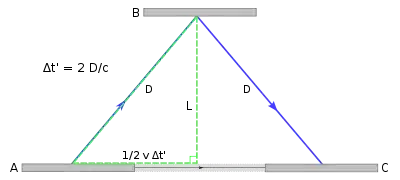We examine the possibility of tachyons under the criteria that they form the energy momentum four vector that transforms according to Lorentz Transformations. Therefore $E$$'$ $=\displaystyle\frac{E-pv}{\sqrt{1-v^2}}$
You've already got a problem here in that ${\sqrt{1-v^2}}$ is derived from Pythagoras's theorem, such that the hypotenuse of a right-angle triangle represents the speed of light in natural units wherein c=1, the base represent speed v as a fraction of c, and the height is the Lorentz factor. See the simple inference of time dilation on Wikipedia:
 public domain image by Mdd4696
public domain image by Mdd4696
Think of the wave nature of matter, and of a helical spring viewed sideways, such that it looks like this: /\/\/\/\/\. Now mentally stretch it to emulate a particle moving at a faster speed. Divide each isosceles triangle in half vertically, then think of each right-angle triangle as per the illustration above. Keep stretching the spring until it's stretched out tight, like this _________. The height is now zero, because v=c and so ${\sqrt{1-v^2}}$ is zero. You can't stretch the spring further, and the Lorentz factor can't be for example ${\sqrt{1-1.414^2}}$. You end up with an imaginary speed and a non-real solution.
If the velocity of the tachyon is $u$ in frame $O$ then it is clear that $E'<0$ if $E<pv$.
It isn't clear, because you have an undefined result. The Lorentz factor is based on Pythagoras's theorem, and there are no right-angle triangles where the base is longer than the hypotenuse.
Now if we assume that $E = \displaystyle\frac{im_*}{\sqrt{1-u^2}}$ and $p = \displaystyle\frac{im_*u}{\sqrt{1-u^2}}$ ( Where $im_*$ is the 'rest mass' of tachyon and $i = \sqrt{-1}.$ ) then we arrive at the conclusion that $E'<0 $ for $uv>1$.
I'm afraid it's the wrong conclusion. In seismology we have P-waves and S-waves. The former are longitudinal waves, and they propagate faster than the latter, which are transverse waves. Light is a transverse wave too. If there was some other wave that propagated faster than light, its energy would not be zero.
This negative energy is explained with the help of the accompanied reversal of chronological order
You should forget about that. See this answer about time dilation and the related answer about the nature of time. Clocks feature some kind of regular cyclical internal motion and give a cumulative called the time. There is no such thing as negative motion, so there's no such thing as negative time.
what I could not understand is that how the energy can be negative
It can't be.
then the question arises that for what frames $m_*$ is positive and for what frames it is negative and no conclusive or meaningful answer can be provided as our initial choice of frame $O$ was completely arbitrary.
A frame is little more than a state of motion. If there was some tachyonic wave moving faster than light, the non-tachyonic wave nature of matter means you will never be able to move such that it appeared to be moving slower than light.
So one must assume that some different expression for the energy and momentum should be at work for tachyonic particles.
Correct.
 public domain image by Mdd4696
public domain image by Mdd4696